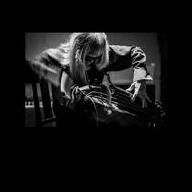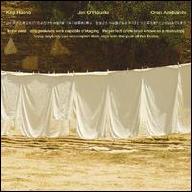Initially interested in theater, Haino started making music as a teenager after he first heard the Doors. He eventually became enamored with early blues music, especially Blind Lemon Jefferson, as well as jazz, musique concrète, traditional Japanese music, and countless other styles. He formed an improvisational jazz group called Lost Aaraaf in 1970, and their chaotic performances, marked by Haino's frenzied screaming, were met with derision from audiences. Japanese national broadcaster NHK banned Haino from the airwaves for several decades starting in 1973. After leaving Lost Aaraaf in the mid-'70s, Haino worked with Japanese psychedelic musician Magical Power Mako before forming Fushitsusha in 1978. Initially a duo including synthesizer player Tamio Shiraishi, the group eventually became a trio rounded out by bassist Jun Harmano and drummer Shuhei Takashima. Influenced by Krautrock and British psychedelia, the group shifted lineups numerous times, and didn't release any records until 1989, when influential Japanese underground label PSF Records issued a double-live album. John Zorn's Avant label released the group's debut studio effort, Allegorical Misunderstanding, in 1993, gaining them an increase in exposure and setting the stage for a steady release schedule throughout the coming decade.
Haino became highly prolific as a solo artist as well. Even though he had released one prior solo album (1981's cathartic, nightmarish Watashi-Dake?), he re-emerged with 1990's Nijiumu, a bleak, droning album partially inspired by medieval music. Further albums appeared on PSF as well as on Zorn's Tzadik, Table of the Elements, Blast First, and many other experimental labels, and he became one of the noise genre's most influential artists. While he remained best known as a guitarist, he also explored other instruments on his recordings, including hurdy-gurdy, percussion, and tape loops. He recorded albums with several highly regarded experimental musicians, including Loren Mazzacane Connors, Alan Licht, and Derek Bailey. He also started several collaborative projects, many of which only lasted for one or two albums or a handful of performances. Aihiyo, for example, formed in the late '90s and released two albums of extremely unconventional covers of pop songs. One of his more prolific projects was Vajra, an improvisational trio with guitarist/folk singer Kan Mikami and drummer Toshiaki Ishizuka.
As the 21st century began, Fushitsusha became largely inactive, but Haino remained prolific as ever, releasing solo albums on labels like Alien8, Turtles' Dream, and Swordfish Records, in addition to collaborations with the likes of Boris, Peter Brötzmann, and Ruins drummer Tatsuya Yoshida. In 2004, he recorded two different versions of the blues covers album Black Blues, an acoustic Soft Version and an electric Violent Version. He began a fruitful, long-running collaboration with Jim O'Rourke and Oren Ambarchi, releasing numerous albums on Ambarchi's Black Truffle label. Haino, Ambarchi, and Stephen O'Malley also formed an improvisational trio called Nazoranai after the three collaborated during a 2006 performance of O'Malley's drone metal group Sunn O))). Haino also released albums with Finnish electronic duo Pan Sonic and German avant-garde classical ensemble Zeitkratzer. In 2011, Fushitsusha began performing and recording again, and as before, the group's lineup continued to fluctuate frequently. The group released four albums on the Heartfast label in 2012 and 2013.
Many of Haino's recordings have featured long, poetic song and album titles. For example, a 2016 double-LP with O'Rourke and Ambarchi bore the name I Wonder if You Noticed I'm Sorry Is Such a Lovely Sound It Keeps Things from Getting Worse. In 2017, Haino collaborated with keyboardist Jozef Dumoulin and drummer Teun Verbruggen on The Miracles of Only One Thing. Other collaborations released during the year included Light Never Bright Enough (with John Butcher) and double-LP This Dazzling, Genuine Difference Now Where Shall It Go? (with O'Rourke and Ambarchi). Haino collaborated with sludge-metal group Sumac for the full-length American Dollar Bill: Keep Facing Sideways, You're Too Hideous to Look at Face On, which was released by Thrill Jockey in 2018. Other collaborations with Charles Hayward, Merzbow, and a second set with Sumac rounded out the decade.
Who Knew That So Many Blues Should Reside Here Too..., a solo gamelan performance recorded in 2007 at Osaka University of Arts, was released in 2020. A third Sumac collaboration, Into This Juvenile Apocalypse Our Golden Blood to Pour Let Us Never, appeared in 2022. ~ John Dougan & Paul Simpson, Rovi


















